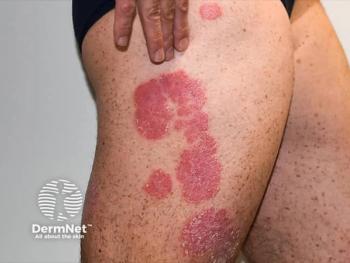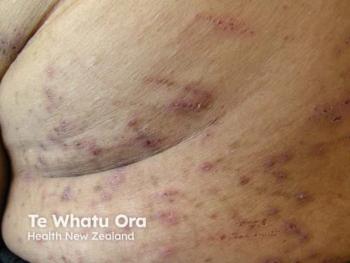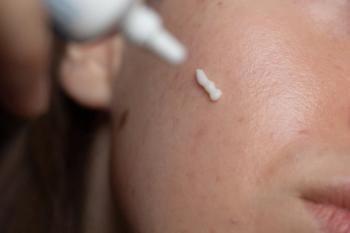
AC-201 Shows Strong Phase 2 Results in Psoriasis Trial
Key Takeaways
- AC-201 showed significant efficacy in a phase 2 trial for plaque psoriasis, especially at 50 mg BID, outperforming placebo in PASI-75, PASI-90, and sPGA scores.
- The trial demonstrated a clear dose-response relationship, with the 50 mg BID dose achieving the highest efficacy among treatment groups.
Accropeutics reveals promising Phase 2 trial results for AC-201, a selective TYK2/JAK1 inhibitor, showing significant efficacy in treating plaque psoriasis.
Accro Bioscience (Suzhou) Limited (Accropeutics), a clinical-stage biotech company focused on mechanisms of regulated cell death in human diseases, has announced encouraging results from a phase 2 clinical trial of its novel compound AC-201. This oral, selective TYK2/JAK1 inhibitor is being developed to treat autoimmune and inflammatory diseases, including moderate to severe plaque psoriasis and systemic lupus erythematosus. With its recent progress, AC-201 may represent a promising therapeutic option within the expanding class of Janus kinase (JAK) inhibitors.1-2
Study Design and Methodology
The phase 2 trial of AC-201 was a multicenter, randomized, double-blind, placebo-controlled study conducted in China. A total of 145 adult patients with moderate to severe plaque psoriasis were enrolled and randomized in a 1:1:1:1 ratio to receive either AC-201 at 25 mg twice daily (BID), 50 mg BID, or 100 mg once daily (QD), or placebo. The study spanned 12 weeks, with the primary endpoint being the proportion of patients achieving a 75% reduction from baseline in the Psoriasis Area and Severity Index (PASI-75). Key secondary endpoints included PASI-90 (90% improvement) and static Physician's Global Assessment (sPGA) scores of 0 or 1 (clear or almost clear skin).
Efficacy Outcomes
The trial results showed a clear dose-response relationship. At week 12, the PASI-75 response rate was significantly higher in the treatment groups compared to placebo:
- Placebo: 8.1%
- 25 mg BID: 31.4% (p=0.012 vs. placebo)
- 50 mg BID: 74.3% (p<0.001)
- 100 mg QD: 59.5% (p<0.001)
PASI-90 results followed a similar trend:
- Placebo: 2.7%
- 25 mg BID: 20.0% (p=0.02)
- 50 mg BID: 48.6% (p<0.001)
- 100 mg QD: 24.3% (p=0.007)
Improvements in sPGA scores (0/1) were also noteworthy:
- Placebo: 5.4%
- 25 mg BID: 31.4% (p=0.004)
- 50 mg BID: 71.4% (p<0.001)
- 100 mg QD: 59.5% (p<0.001)
These data indicate that AC-201, particularly at 50 mg BID, produced robust clinical responses, significantly outperforming placebo in key efficacy endpoints.
Safety Profile
AC-201 was generally well tolerated across all treatment groups. No serious adverse events (SAEs) or adverse events (AEs) leading to discontinuation were reported. The majority of treatment-emergent adverse events (TEAEs) were mild or moderate in severity. The most frequently reported TEAEs included upper respiratory tract infection and hypertriglyceridemia.
These findings build on prior phase 1 data from studies conducted in Australia and China, where AC-201 demonstrated dose-proportional pharmacokinetics (PK), no significant accumulation with repeated dosing, and no clinically relevant food effect. Additionally, AC-201 was effective at blocking disease-relevant pro-inflammatory cytokines, consistent with its proposed mechanism of action.
Mechanism of Action and Development Rationale
AC-201 is a small molecule that selectively inhibits TYK2 and JAK1 by binding to their pseudo kinase domain (JH2), which stabilizes an auto-inhibitory conformation and reduces activation of downstream inflammatory pathways. Unlike pan-JAK inhibitors, AC-201 does not affect the JAK2 pathway, which may confer a better safety profile by sparing hematopoietic signaling involved in erythropoiesis and thrombopoiesis.
The drug’s design aims to modulate immune responses implicated in diseases such as psoriasis and systemic lupus erythematosus without the broader immunosuppressive effects seen with some less selective JAK inhibitors.
Conclusion and Outlook
The phase 2 data support AC-201 as a promising therapeutic candidate for moderate to severe plaque psoriasis. The observed efficacy at the 50 mg BID dose, coupled with a favorable safety profile, provides a strong rationale for advancing to phase 3 trials. AC-201's selectivity for TYK2/JAK1, along with its well-characterized pharmacokinetics and tolerability, make it a noteworthy addition to the pipeline of targeted therapies for autoimmune and inflammatory diseases.
Further studies will be crucial in confirming long-term safety and comparative efficacy with existing therapies. As development progresses, AC-201 has the potential to contribute meaningfully to the evolving treatment landscape for psoriasis and other immune-mediated disorders.
References
- Accropeutics announces positive data from phase 2 trial of AC-201, an oral, selective TYK2/JAK1 Inhibitor, for the treatment of moderate-to-severe plaque psoriasis. News release. BioSpace. Published May 21, 2025. Accessed May 21, 2025.
https://www.biospace.com/press-releases/accropeutics-announces-positive-data-from-phase-2-trial-of-ac-201-an-oral-selective-tyk2-jak1-inhibitor-for-the-treatment-of-moderate-to-severe-plaque-psoriasis - Accropeutics doses TYK2/JAK1 inhibitor AC-201 in psoriasis patient in China. News release. Accropeutics. Published May 6, 2024. Accessed May 21, 2025.
https://www.accropeutics.com/news/85.html
Newsletter
Like what you’re reading? Subscribe to Dermatology Times for weekly updates on therapies, innovations, and real-world practice tips.


















